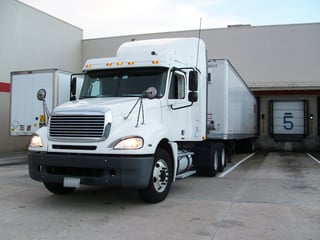 The capacity crunch continues! We’ve touched on this topic a few times already, but you might be wondering, “What causes tightened truck capacity?”
The capacity crunch continues! We’ve touched on this topic a few times already, but you might be wondering, “What causes tightened truck capacity?”
There are actually multiple factors that lead to a decrease in truck availability, and when all of them combine, it leads to a very tough shipping market with a premium on those much-needed trucks. Here are the factors that decrease capacity:
- Driver Shortage. There simply aren’t enough truck drivers out there. The number of qualified drivers has been steadily declining for several years now. It’s a difficult job – it is physically and mentally taxing, drivers are away from family for long periods of time, and they are often underpaid for the work that they do. For every driver lost, capacity is lowered.
- Natural Disasters. Hurricanes are a common occurrence and they impact the ability of drivers to get to where they need to go. They also create the need for diversions of emergency supplies and building materials, which clearly need to be delivered by someone. Diverting drivers to stricken areas adds to capacity issues because normal transportation patterns are interrupted. We just experienced two very large hurricanes a few months ago which created a ripple effect across the country.
- Electronic Logging Devices. This new mandate, beginning December 18th, will tighten capacity by causing more drivers to leave the field due to the increased oversight. It will cause small carriers to exit as well because of the cost of installing the new technology. Take an additional 10 minutes of your time to watch this video regarding ELDs and the impact they will have on drivers. It's definitely worth the time to see different perspectives on this issue: https://www.vox.com/videos/2017/11/20/16670266/trucking-eld-surveillance
- Increased Regulations. This goes hand in hand with the previous factor – increased regulations, such as the ELD mandate, directly contribute to capacity issues. Government regulations control things such as how long drivers can work, and ultimately how carriers function.
- Stock Market Growth. When the stock market is strong, as it is now, manufacturers produce more, which means that there is more product to ship. When the economy is strong, demand increases and capacity decreases.
- Amazon. The online retail giant has been impacting the supply chain since its inception. Despite having their own logistics network, they’ve essentially set the bar for how other shippers function. Amazon Prime’s free, two-day shipping has set the standard, so other shippers have basically had to decrease transit times without increasing costs. Thus, capacity tightens.
- Increased Costs to Carriers. Sometimes carriers themselves bring on decreased capacity, albeit unintentionally. When carrier profits decrease due to deadheads, driver delays, and other inefficiencies, they sometimes try to recover losses by reducing fleets. It makes sense to create leaner processes when losing money, however, when demand rises, the capacity isn’t there.
In summary, capacity is going to fluctuate. As you can see, there are a lot of factors that go into truck availability. As a shipper, it’s wise to be educated on the current market so that you can be proactive, instead of reactive, as capacity continues to tighten.

